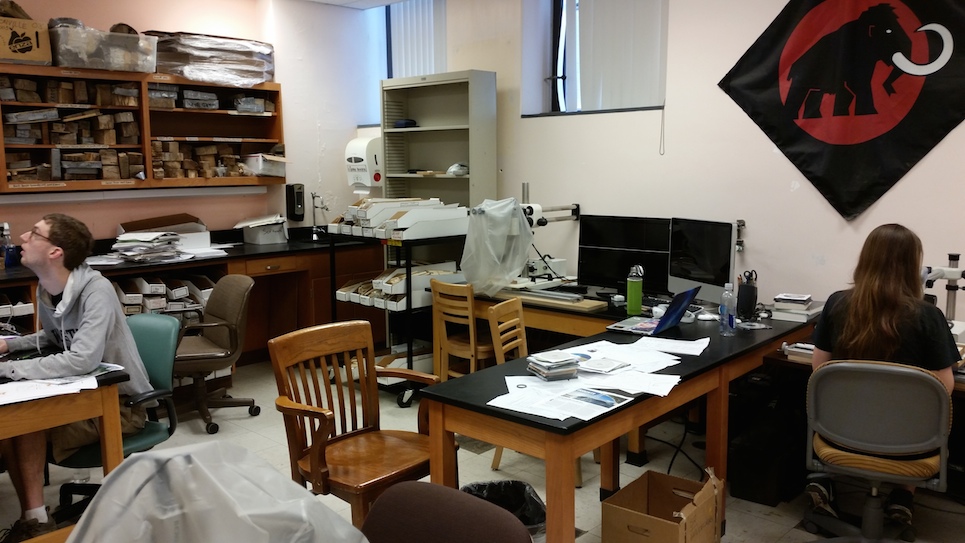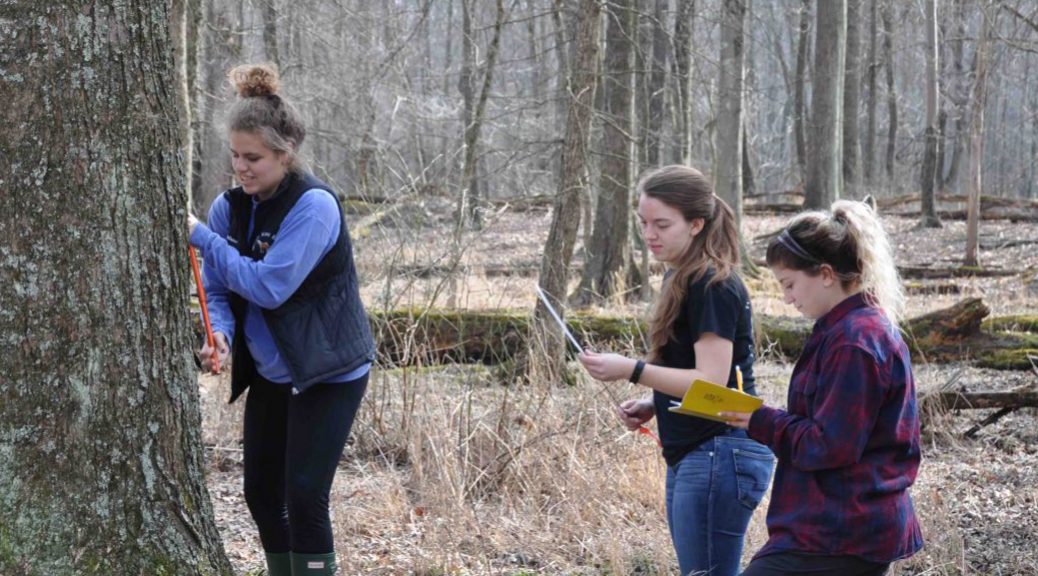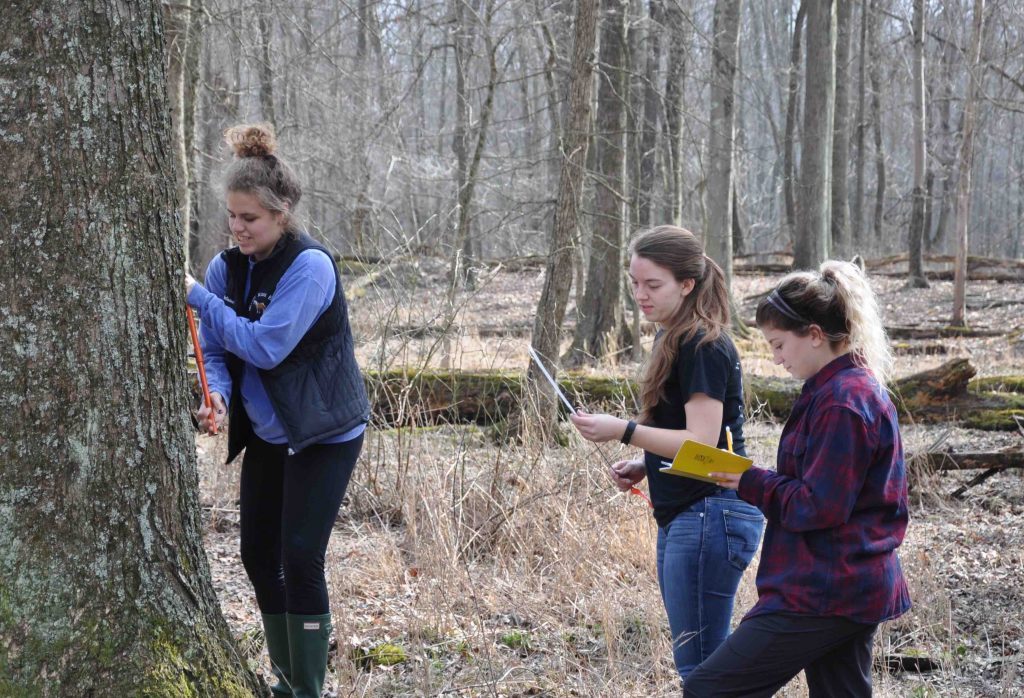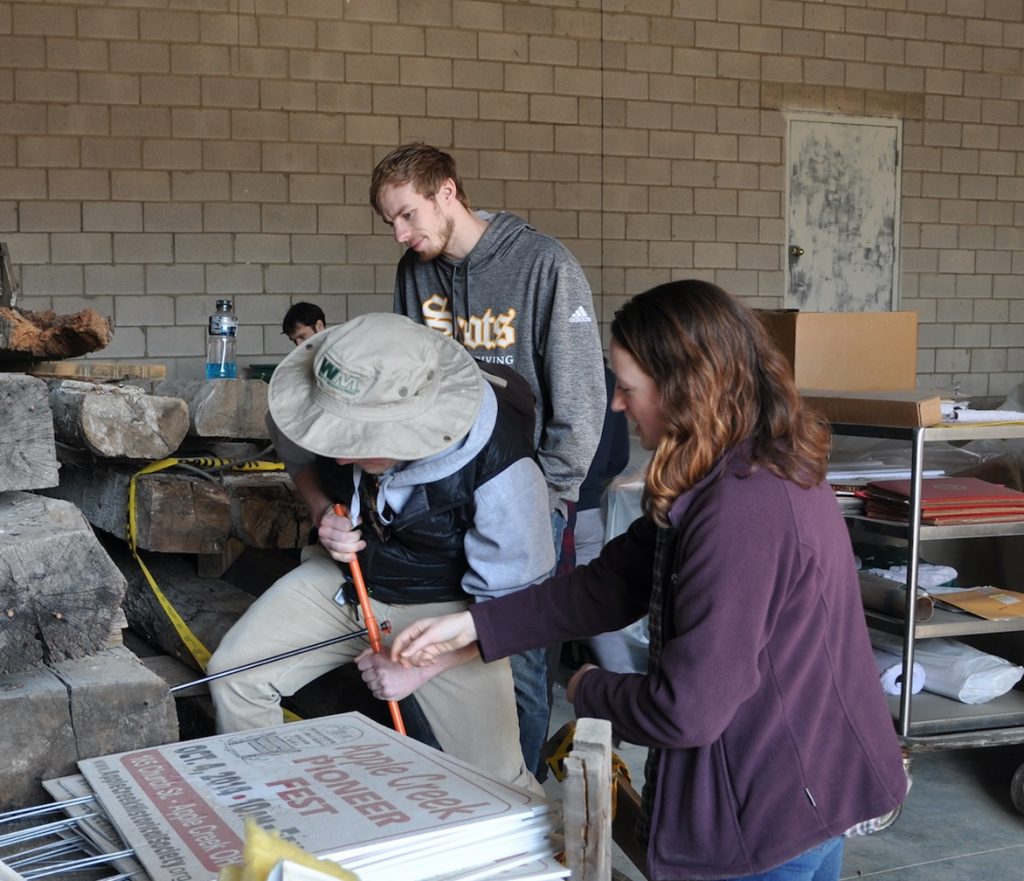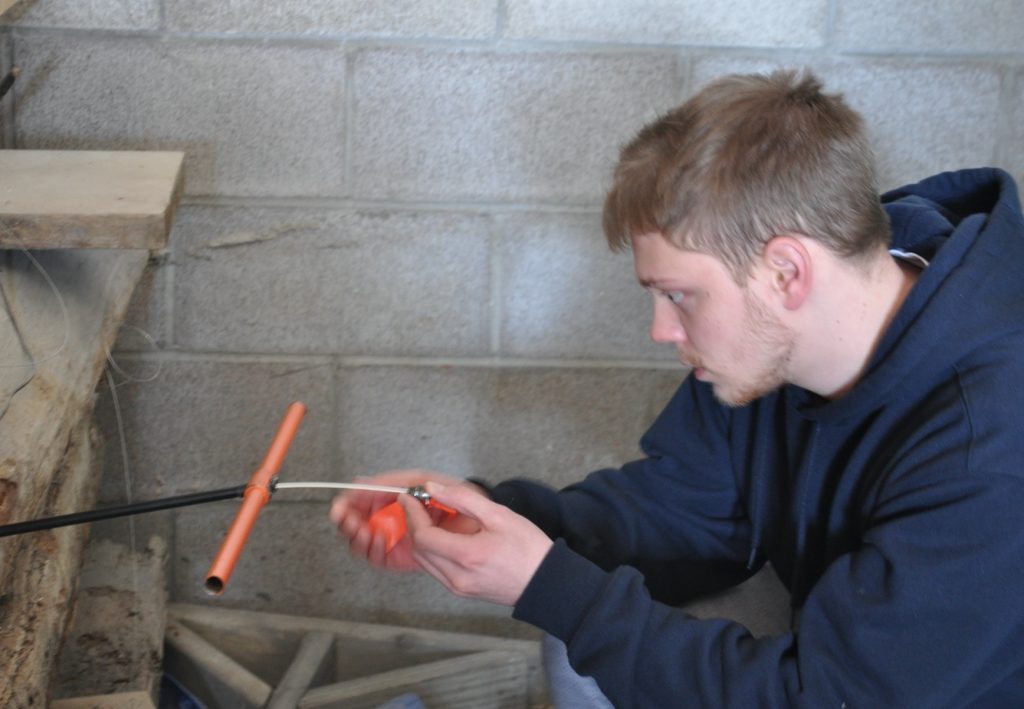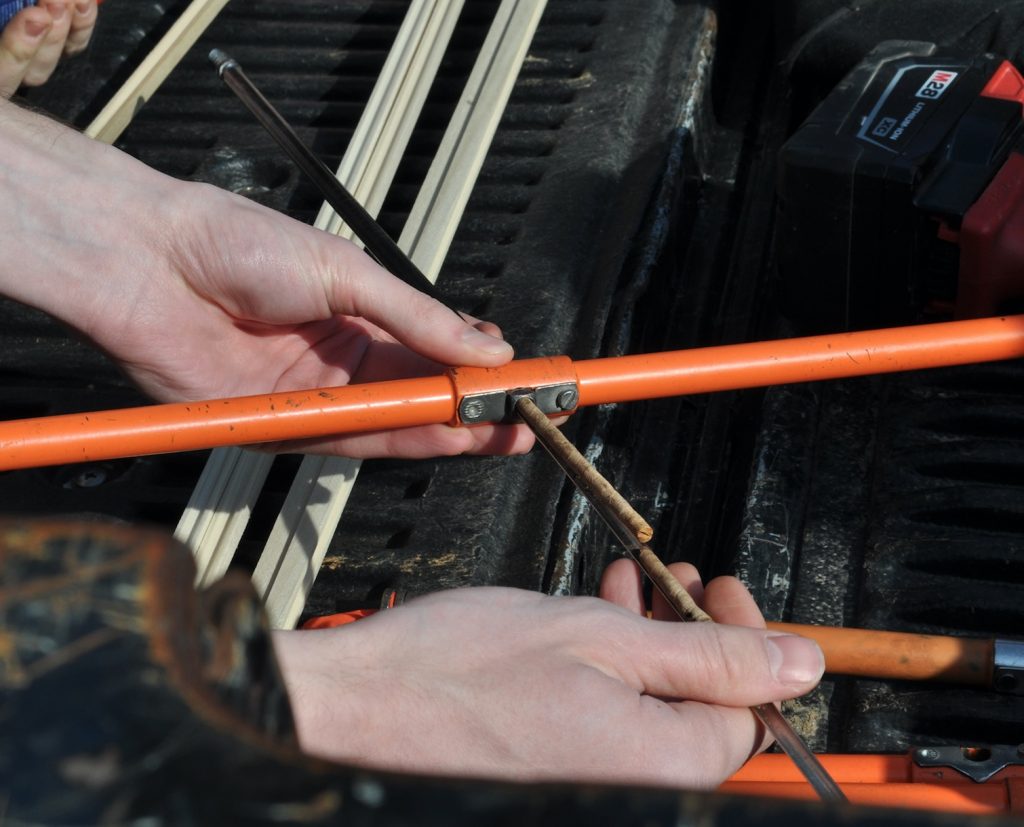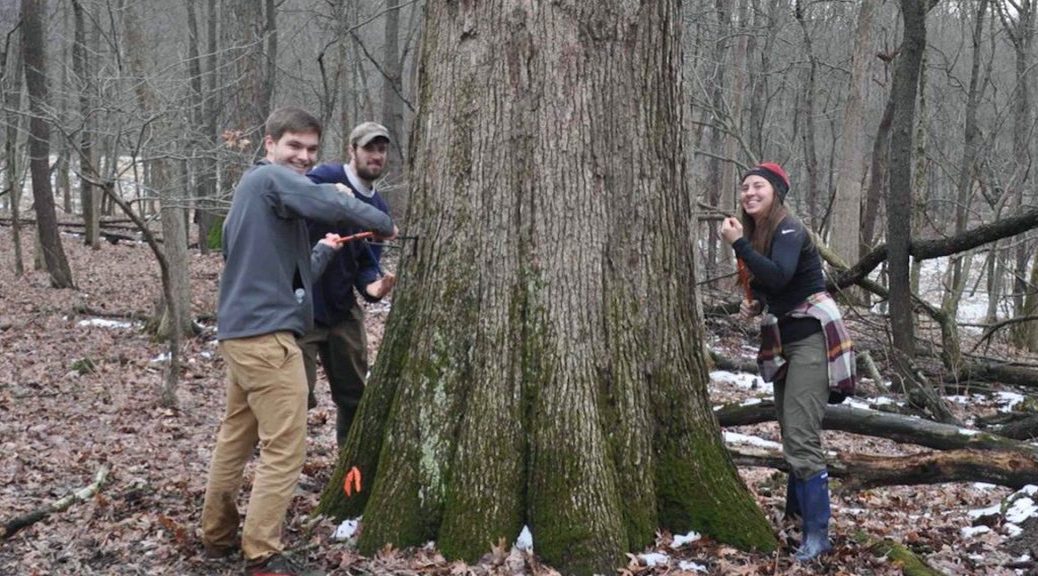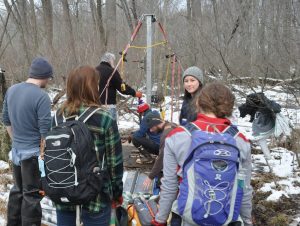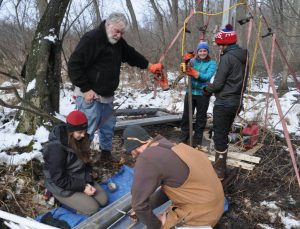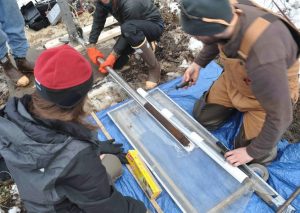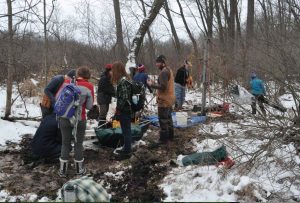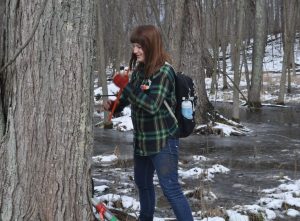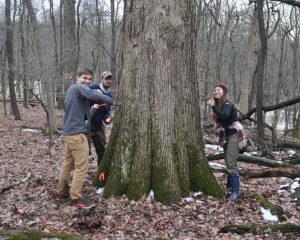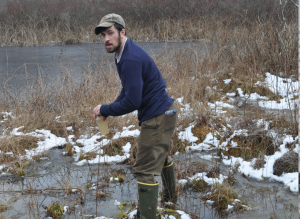This summer, several students will be working in the COW Tree Ring Lab on several different projects. Josh Charlton, Eduardo Luna, and Emily Randall have already been hard at work conducting research on Alaska Yellow Cedar trees. Emily has been looking at ring widths and correlating them with climate variables at Tlingit Point, Alaska, while Josh has been measuring their blue intensity. Both are working on a Keck Gateway project on tree dating.
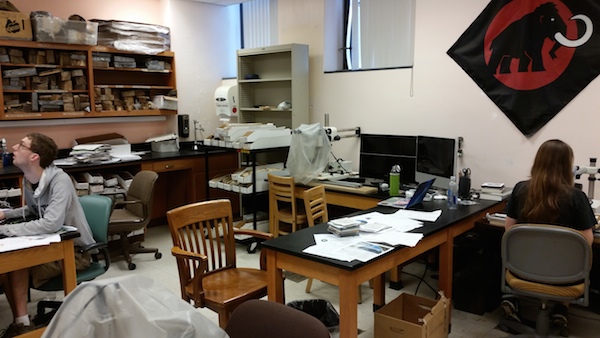
Until today, Eduardo Luna was also in the lab, working with cores from Kamchatka and Alaska. He has also been our resident expert in Adobe Illustrator for producing figures to explain our research — which is very important work.
The final member of our lab right now is me, Brandon Bell. I’ve been working to design this new website for the Tree Ring Lab, with the help of Dr. Breitenbucher, who is the director of Educational Technology at the College. My work station is actually in the center of the photo above.
Yesterday, however, we all went out to do what the Tree Ring Lab does best — core and date trees. We went to the Wayne County Historical Society on Bowman Ave. in order to core two bald cypress trees in front of the Beall House. We were asked to find their date for the Historical Society and for the City of Wooster — the latter is preparing a publication on old or significant trees in the city.
Seeing them for the first time, we were impressed at just how large they were in diameter — although only the tree rings themselves can tell us the tree’s actual age.
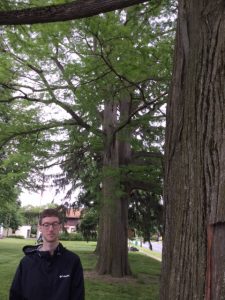
The trees themselves were quite difficult to core. We had to use our longer, blue-colored cores due to the larger diameter of these trees. At one point, we even had to climb on a ladder to get cores from higher on the tree. As it turns out, these particular trees had rot near the base, which made it hard to find a core we could use to date the trees.
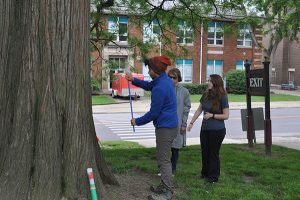
Overall, though, it was nice to get out of the lab and core. The lab will examine the cores we collected yesterday in the near future.
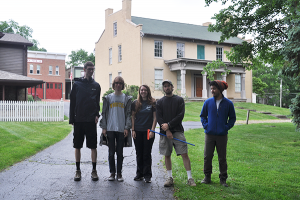
In the coming weeks, all of us are going on research trips for Geology — In fact, Eduardo just left for Utah. Emily will also be going to Utah in a couple of weeks, and Josh will join Dr. Wiles and Nick Wiesenberg for research in Alaska. I’ll leave next Tuesday for San Francisco, California for my Independent Study research.
Despite this, it looks like it will be a full summer of research for the Tree Ring Lab. I’ve heard that, after we are gone in late June, another crew of students will come to the Tree Ring Lab to take our places in July. Stay tuned for the next updates on this research, and the launch of our new website.

